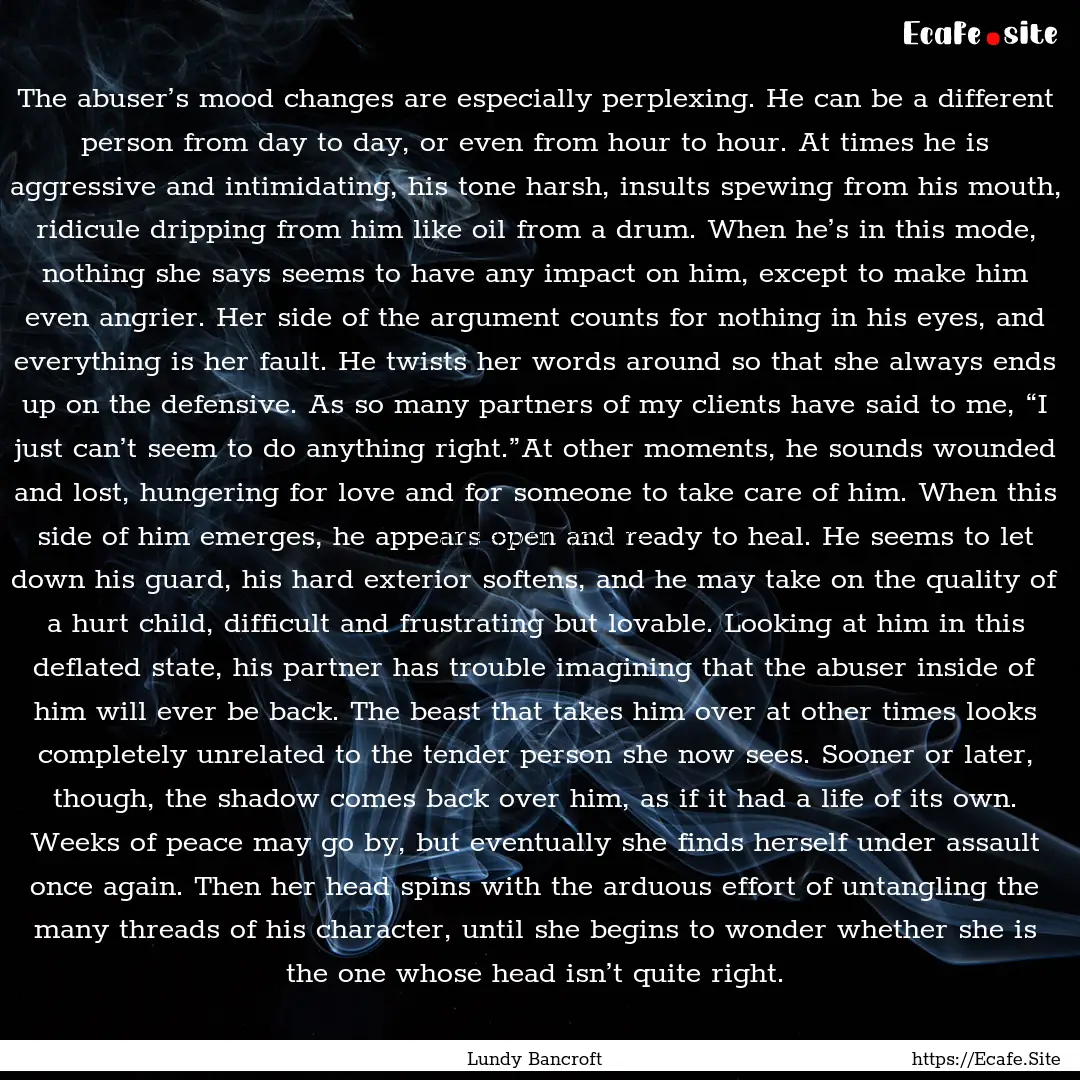
Report, if you have a problem with this page“ The abuser’s mood changes are especially perplexing. He can be a different person from day to day, or even from hour to hour. At times he is aggressive and intimidating, his tone harsh, insults spewing from his mouth, ridicule dripping from him like oil from a drum. When he’s in this mode, nothing she says seems to have any impact on him, except to make him even angrier. Her side of the argument counts for nothing in his eyes, and everything is her fault. He twists her words around so that she always ends up on the defensive. As so many partners of my clients have said to me, “I just can’t seem to do anything right.”At other moments, he sounds wounded and lost, hungering for love and for someone to take care of him. When this side of him emerges, he appears open and ready to heal. He seems to let down his guard, his hard exterior softens, and he may take on the quality of a hurt child, difficult and frustrating but lovable. Looking at him in this deflated state, his partner has trouble imagining that the abuser inside of him will ever be back. The beast that takes him over at other times looks completely unrelated to the tender person she now sees. Sooner or later, though, the shadow comes back over him, as if it had a life of its own. Weeks of peace may go by, but eventually she finds herself under assault once again. Then her head spins with the arduous effort of untangling the many threads of his character, until she begins to wonder whether she is the one whose head isn’t quite right. ”

Lundy Bancroft
From : Why Does He Do That?: Inside the Minds of Angry and Controlling Men



